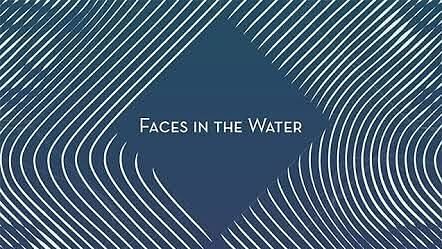
'Faces in the Water' cover
Credit: By Special arrangement
Perhaps the most told story about the author Janet Frame (1924-2004) is that it was her writing which saved her mind, quite literally. She was scheduled for leucotomy (a form of lobotomy), as was the trend in psychiatry of her time in Aotearoa, New Zealand when the medical staff heard she had won a literary prize and stopped the operation.
Janet Frame grew up in a large working-class household that faced tragic bereavement, and she struggled with depression in her 20s. She was diagnosed with schizophrenia and was made to spend nearly a decade in and out of psychiatric establishments, undergoing over 200 electroconvulsive shock treatments. Thanks to her literary career, she found an opportunity to escape this confinement, leaving New Zealand and going on to write prolifically. Her work includes 12 novels, four short story collections and a volume of poetry. She wrote a three-part autobiography that was made into the film An Angel At My Table by Jane Campion.
Her first novel, Owls Do Cry (1957), reflected her family’s tragedies, her illness, and her experience of the asylums, and was considered a masterpiece in New Zealand.
She wrote her second novel Faces In The Water (1961) when a psychiatrist in England told her that she did not, in fact, suffer from schizophrenia or any mental illness and that perhaps writing about her experiences of the psychiatric establishment with this knowledge might prove cathartic. And so, she did; she put her intense felicity for language to work in describing the inner world of the protagonist Istina Mavet who is interred in several psychiatric facilities. In this novel, we slip between Istina’s anxious and vivid mind to her incisive commentary about the banal cruelty of life in an asylum:
“I know that the linen room was very often my sanctuary. I looked through its little dusty window upon the parks and the lawns and trees and the distant blue strip of sea-like sticky paper pasted edge to edge with the sky. I wept and wondered and dreamed the abiding dream of most mental patients: The World, Outside, Freedom; and foretasted too vividly the occasions I most feared — electric shock treatment”.
At the very outset, the book depicts the experience of mental illness as well as the experiences of the mentally ill at the hands of the medical establishment of the time. The prose is poetic, associative, and rich in imagery, both dreamlike and nightmarish. We go through what Istina and other patients go through. Their harrowing suffering shows us the nature of these institutions that worked to confine, control, and tame the mentally ill.
Closer home, in this city of mental health institutions, Bengaluru, we have the Kannada novel Sharapanjara by Triveni from the 1960s, which even to this day remains one of the few sensitive attempts to write about mental illness in our milieu. In this novel, made into a film by Puttanna Kanagal in 1971, we witness the unspooling of the protagonist Kaveri’s mind and her descent into clear and uncontrollable madness. Kaveri recovers from her illness, but facing social ostracism, she finds this rejection from society harder than any actual illness she suffers and retreats into madness again. It is not difficult to make the connection between Istina Mavet and Kaveri. Both books explore, in Frame’s words, “the territory of loneliness” of these women characters that reflect a difficult truth about society’s treatment of women’s minds and social roles.
In Hilary Mantel’s sharp introduction to Faces In The Water, she talks about how Frame and her work were often bucketed in the “mad category” of literature. Mantel questions this tendency to pathologise the writer and asks what we can learn from the conscious craft of Frame’s vast work, which draws from the intermingling of life and literature.
The author is a writer and editor based in Mysuru. She enjoys non-fiction about politics and society, and the punny brilliance of Anthea Bell.
Piqued is a monthly column in which the staff of Champaca Bookstore bring us unheard voices and stories from their shelves.